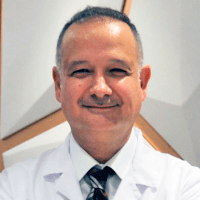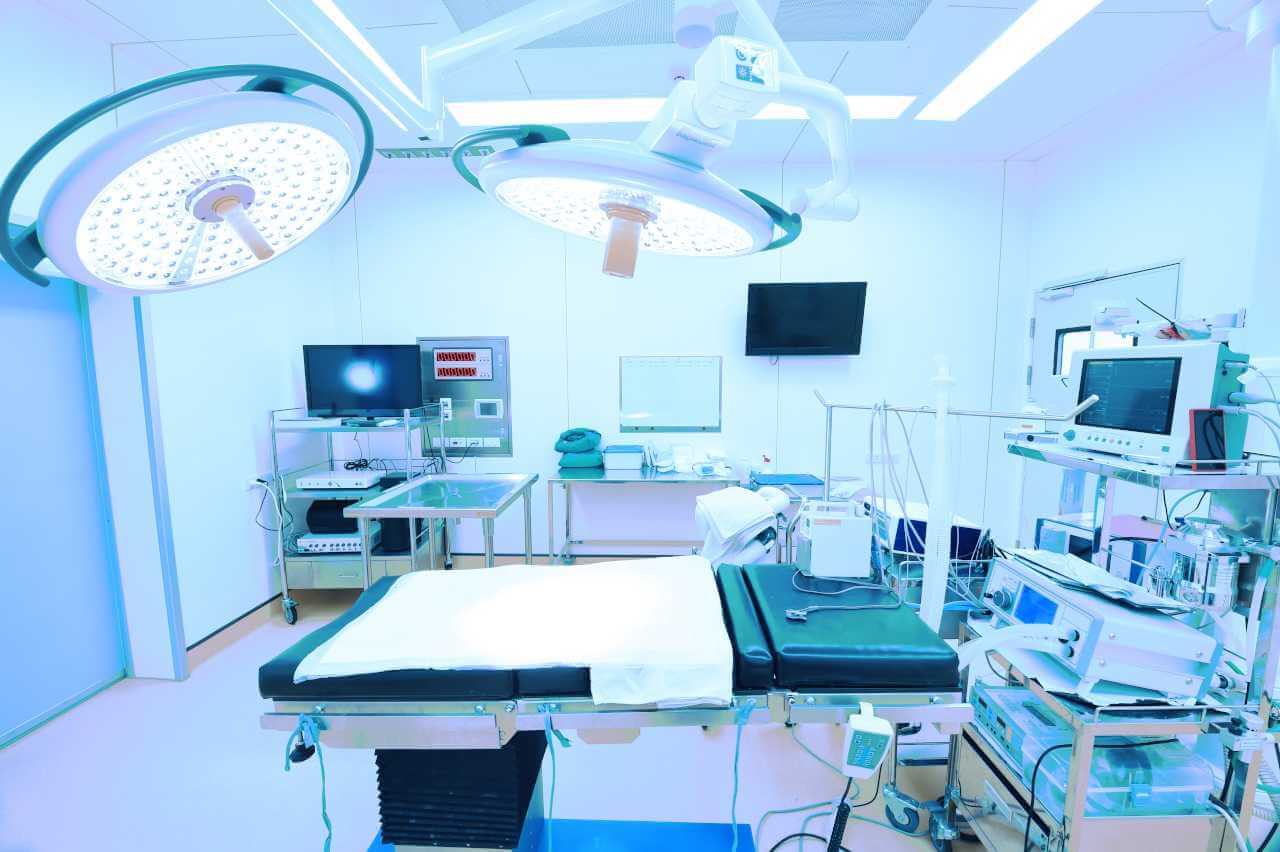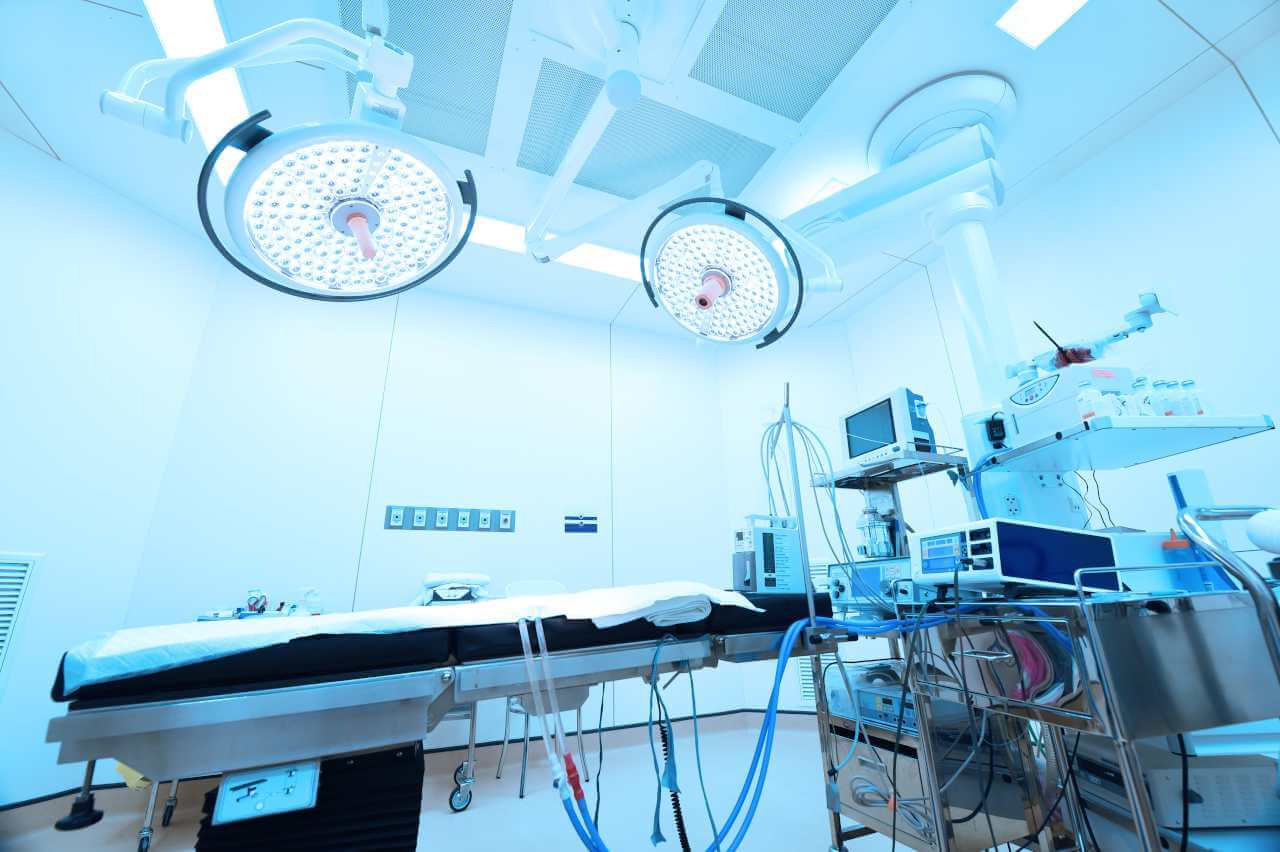
The program includes:
- Initial presentation in the clinic
- clinical history taking
- review of medical records
- physical examination
- laboratory tests:
- complete blood count
- general urine analysis
- biochemical analysis of blood
- TSH-basal, fT3, fT4
- tumor markers (AFP, CEA, СА-19-9)
- inflammation indicators (CRP, ESR)
- indicators of blood coagulation
- abdominal ultrasound scan
- CT/MRI of abdomen
- preoperative care
- percutaneous embolization (coiling) or chemoembolization
- symptomatic treatment
- cost of essential medicines
- nursing services
- elaboration of further recommendations
How program is carried out
During the first visit, the doctor will conduct a clinical examination and go through the results of the available diagnostic tests. After that, you will undergo the necessary additional examination, such as the assessment of liver and kidney function, ultrasound scan, CT scan and MRI. This will allow the doctor to determine which vessels are feeding the tumor and its metastases, as well as determine how well you will tolerate the procedure.
Chemoembolization begins with local anesthesia and catheterization of the femoral artery. The thin catheter is inserted through a few centimeters long incision of the blood vessel. The doctor gradually moves the catheter to the vessel feeding the primary tumor or its metastases. The procedure is carried out under visual control, an angiographic device is used for this. The vascular bed and the position of the catheter in it are displayed on the screen of the angiograph.
When the catheter reaches a suspected artery, a contrast agent is injected through it. Due to the introduction of the contrast agent, the doctor clearly sees the smallest vessels of the tumor and the surrounding healthy tissues on the screen of the angiograph. After that, he injects emboli into the tumor vessels through the same catheter.
Emboli are the spirals or the liquid microspheres. The type of embolus is selected individually, taking into account the diameter of the target vessel. When carrying out chemoembolization, a solution of a chemotherapy drug is additionally injected into the tumor vessel. Due to the subsequent closure of the vessel lumen with an embolus, the chemotherapy drug influences the tumor for a long time. In addition, the drug does not enter the systemic circulation, which allows doctors to use high doses of chemotherapeutic agents without the development of serious side effects. Chemoembolization leads to the destruction of the tumor or slowing down its progression.
After that, the catheter is removed from the artery. The doctor puts a vascular suture on the femoral artery and closes it with a sterile dressing. During chemoembolization, you will be awake. General anesthesia is not used, which significantly reduces the risks of the procedure and allows performing it on an outpatient basis, avoiding long hospital stay.
After the first procedure, you will stay under the supervision of an interventional oncologist and general practitioner. If necessary, you will receive symptomatic treatment. As a rule, a second chemoembolization procedure is performed in 3-5 days after the first one in order to consolidate the therapeutic effect. After that, you will receive recommendations for further follow-up and treatment.
Required documents
- Medical records
- MRI/CT scan (not older than 3 months)
- Biopsy results (if available)
Service
You may also book:
 BookingHealth Price from:
BookingHealth Price from:
About the department
The Department of Adult and Pediatric Diagnostic, Interventional Cardiology at the Memorial Bahçelievler Hospital Istanbul offers all the possibilities of modern medicine for the diagnostics and treatment of cardiac pathologies of varying severity. The department specializes in the treatment of patients of all age groups – from infants to the elderly. In addition, the department includes the specialized center for the treatment of defects of the fetal cardiovascular system in the womb. To provide medical care to patients with acute coronary syndrome, the department has a Chest Pain Unit, which operates around the clock. The department is headed by Prof. Dr. med. Barıs Okcun.
The department's medical team cooperates closely with cardiac surgeons, thanks to which the patients benefit from comprehensive treatment of all cardiovascular diseases. The department's cardiologists are distinguished by their exceptional professionalism and rich clinical experience, which, in combination with modern technical infrastructure, forms a solid base for the provision of top-class medical services. The specialists regularly participate in national and international congresses, undergo advanced training courses, which allow them to keep pace with innovations in their field of activity.
One of the most progressive treatment methods, which is successfully practiced in the department, is enhanced external counterpulsation (EECP). The procedure is a non-surgical method for the treatment of coronary artery disease and heart failure. Prior to the development of this technology, coronary artery disease was treated with bypass surgery and angioplasty. The main advantage of the EECP technique is the absence of interventional manipulations and side reactions. The therapeutic effect is achieved by compressing the lower leg, thighs and buttocks with special cuffs, which are gradually inflated with air at high pressure, thereby creating a wave of blood pressure in the arteries. Thus, the pressure in the aortic orifice is elevated and the blood flow through the coronary vessels is improved, which in turn helps to relieve pain in the sternum and improve the work of the heart muscle. In addition, the use of enhanced external counterpulsation increases the resistance of a person with cardiac problems to physical activity. It is worth noting that the EECP method was approved by the FDA in 1995 and today it is a medical innovation, which is not available in every hospital.
The therapeutic offer is complemented by other modern techniques, which have proven themselves worldwide. For example, cardiac pacemakers and catheter ablation are used for the treatment of arrhythmias, aortic valve stenosis is treated with advanced TAVI technique, while mitral valve stenosis is treated with a balloon mitral valvuloplasty, etc.
The department's range of medical services includes:
- Diagnostic procedures, including interventional ones
- Electrocardiography
- Echocardiography (ultrasound heart scanning)
- Treadmill exercise stress echocardiography
- Transesophageal echocardiography
- Holter monitoring
- Tilt table test
- Cardiac catheterization
- Coronary angiography
- Myocardial perfusion scintigraphy (in collaboration with the Department of Nuclear Medicine)
- CT angiography (in collaboration with the Department of Radiology)
- Cardiac MRI (in collaboration with the Department of Radiology)
- Interventional therapeutic procedures
- Placement of pacemakers and defibrillators for arrhythmia treatment
- Catheter ablation for arrhythmia treatment
- Transcatheter aortic valve implantation (TAVI) for aortic valve stenosis treatment
- Balloon mitral valvuloplasty for mitral valve stenosis treatment
- Percutaneous transluminal coronary angioplasty (PTCA) for the treatment of coronary artery stenosis caused by atherosclerosis
- Enhanced external counterpulsation (EECP) for the treatment of coronary artery disease and heart failure
- MitraClip for the treatment of mitral valve regurgitation in contraindications for open surgery
- Transcatheter balloon valvuloplasty for pulmonary valve stenosis
- Interventional procedures for correction of atrial septal defect, ventricular septal defect and patent foramen ovale
- Other diagnostic and therapeutic options
Curriculum vitae
Professional Career
- Since 2018 Head of the Department of Adult and Pediatric Diagnostic, Interventional Cardiology at the Memorial Bahçelievler Hospital Istanbul.
- Since 2012 Professor of Cardiology, Heart Institute at the Istanbul University.
- 2005 - 2011 Assistant Professor of Cardiology, Heart Institute at the Istanbul University.
- 1999 - 2005 Cardiologist, Heart Institute at the Istanbul University.
Higher Education and Postgraduate Training
- 1992 - 1998 Specialized training in Cardiology, Heart Institute at the Istanbul University.
- 1986 - 1992 Study of Human Medicine at the Faculty of Medicine of the Ankara University.
Scientific Publications
- 92 scientific publications in national and international journals.
- 104 reports at the national congresses.
Participation in Professional Trainings, Courses and Conferences
- Attended over 100 national and international congresses.
Memberships in Professional Societies
- Turkish Society of Cardiology.
Photo of the doctor: (c) Memorial Bahçelievler Hospital
About hospital
The Memorial Bahçelievler Hospital Istanbul is an advanced multidisciplinary medical center that began its clinical practice in 2018. It is part of the world famous Memorial Healthcare Group. The hospital was designed in accordance with the very latest standards of modern architecture with the aim of providing top-class medical services in a pleasant and patient-oriented environment. It is worth noting that the interior of the medical facility is full of live plants, which have a positive impact on people and their mood. The hospital is awarded the prestigious LEED Platinum Certificate, confirming the highest level of environmental friendliness and safety of the buildings of the medical complex.
The hospital has 320 beds for patient hospitalization. The medical and technical base of the hospital is one of the best and most advanced in Turkey – modern diagnostic rooms with MRI, CT, PET-CT scanners, gamma cameras, X-ray equipment, mammography systems and other equipment, 15 operating rooms, including for robot-assisted, endoscopic and hybrid surgical interventions, intensive care units, etc. The hospital also has a high-performance state-of-the-art Elekta Versa HD SIGNATURE system for radiation therapy.
The powerful technical resources of the hospital are complemented by a highly professional medical staff, who have achieved significant success not only at the national level, but also in the international medical arena. The doctors and nursing staff of the hospital are distinguished by excellent medical qualifications, as well as humane and compassionate attitude towards each patient. They strongly support their patients on their way to recovery.
The medical center admits not only Turkish citizens for treatment, but also patients from 92 countries of the world, and therefore it boasts a wealth of experience in serving international patients with clinical cases of varying complexity.
Photo: (c) Memorial Bahçelievler Hospital, (c) depositphotos
Accommodation in hospital
Patients rooms
The patients of the Memorial Bahçelievler Hospital Istanbul live in cozy rooms with an excellent layout and modern design. The standard patient rooms are equipped with a comfortable automatically adjustable bed, a bedside table, a table and a chair, a wardrobe, a sofa for receiving visitors. The patient room also includes a TV, a telephone and Wi-Fi. Each room has an ensuite bathroom with shower and toilet. The hospital also provides patients with enhanced-comfort rooms corresponding to a five-star hotel.
Meals and Menus
The patient and the accompanying person are offered tasty and balanced three meals a day. If for some reason you do not eat all foods, you will be offered an individual menu. Please inform the medical staff about your food preferences prior to treatment.
Further details
Standard rooms include:
Accompanying person
During the inpatient program, the accompanying person can live with the patient in a patient room or a hotel of his choice. Our managers will help you choose the most suitable option.
Hotel
During an outpatient program, the patient can stay at the hotel of his choice. Our managers will help you choose the most suitable option.




